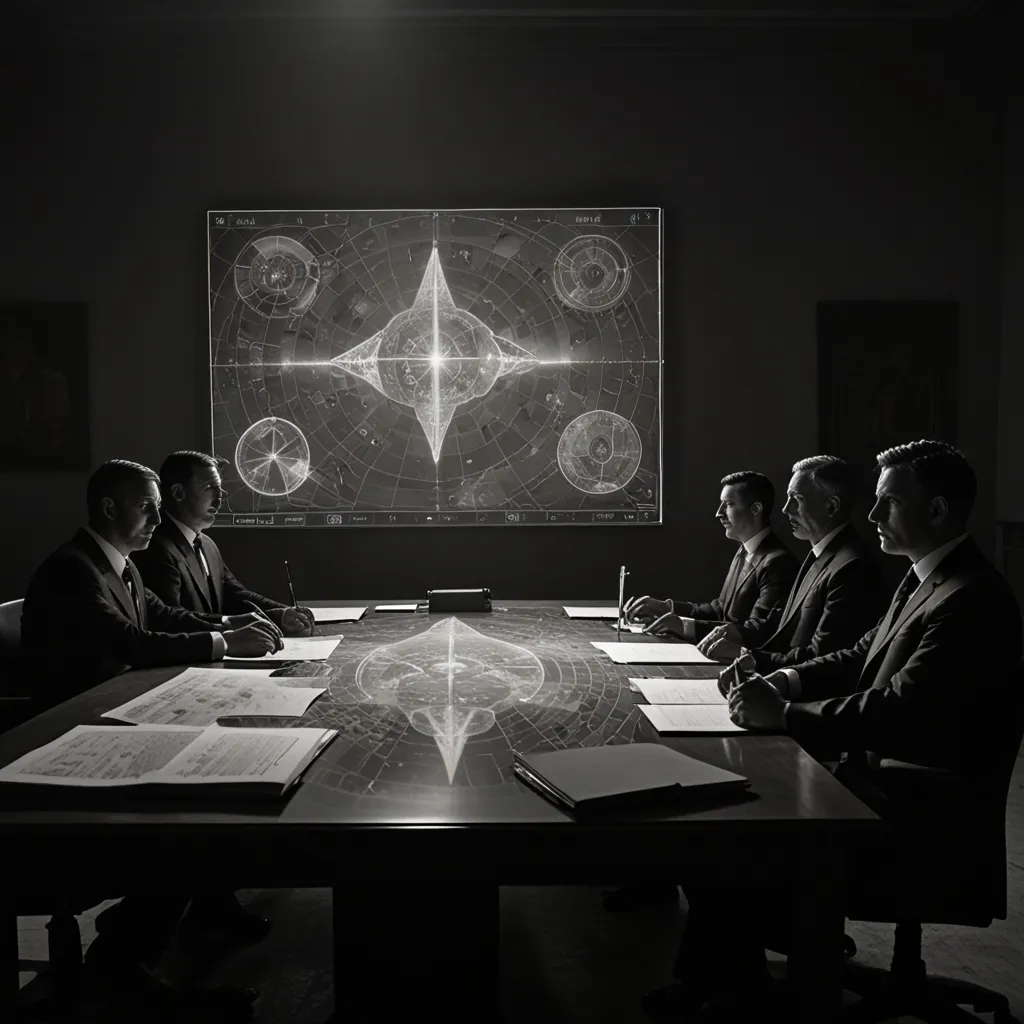When humans finally set foot on Mars, it’s bound to be one of the biggest scientific achievements since the moon landing. But here’s a wild twist: what if I told you that the CIA and the U.S. military might have already been there, not with rockets but with psychics? This story is as intriguing as it is bizarre.
During the Cold War, the U.S. and the Soviet Union always sought an edge over each other. Some of their projects sound straight out of a sci-fi movie, like the CIA’s “Operation Acoustic Kitty.” This project involved implanting a microphone in a cat’s ear and a transmitter at the base of its skull to eavesdrop on Soviet conversations in Washington D.C. Unfortunately, the mission was a dud; the cat got hit by a taxi soon after it was released, wasting 20 million dollars and a rather unlucky feline.
Meanwhile, the Soviets were busy with their own far-out experiments, like using low-frequency radio waves to control dogs’ brains. For real.
Then, in 1972, a classified report surfaced in the U.S. intelligence community. It claimed the Soviets were pumping money into researching ESP, or extrasensory perception, including mind reading and telekinesis, for espionage purposes. This got the CIA so jittery that they launched their psychic spy program.
By the late ’70s, the CIA, Army, and Defense Intelligence Agency had set up secret facilities nationwide, recruiting folks who claimed to have ESP. They were particularly interested in “remote viewing,” a kind of psychic ability where a person supposedly can see or describe a distant or unseen target. And, believe it or not, they found people who could do this with some success.
There’s this incredible story of a psychic named Rosemary Smith, who in 1976, pinpointed the crash site of a downed Russian bomber in Congo. Her remote viewing efforts led to the successful location of the wreckage, much to the astonishment of the intelligence community.
As operations grew, various psychic projects coalesced into what became known as Project Stargate, based out of Fort Meade, Maryland. This program ran for over two decades until 1995 when it was finally shelved, largely due to public exposure by shows like Nightline.
In its heyday, Project Stargate saw psychics involved in all manner of high-stakes operations. They sketched detailed drawings of secret Soviet bases, helped locate hostages, and even identified Scud missile placements during the Gulf War. There’s an eerie account of a remote viewer seeing the World Trade Center attack before it happened, though no heed was given to the warning.
One notable psychic in the program was Angela Ford, who in 1989 tracked down a fugitive customs agent to a place she called “Lowell, Wyoming.” No such place exists, but there is “Lovell, Wyoming,” and guess what? He was hiding there. Close enough for government work.
Naturally, the question arose: If remote viewing works here on Earth, could it work on other planets? Enter Joe McMonagle, a U.S. Army intelligence officer and one of the primary figures in the realm of psychic espionage.
McMonagle served in Vietnam and had a near-death experience in a helicopter crash, after which he claimed to have developed psychic abilities. Between 1978 and 1984, he worked on 450 CIA missions, including locating hostages in Iran and uncovering spy gadgets. But his most extraordinary mission came on May 22, 1984.
On that day, McMonagle was given a sealed envelope and a set of geographic coordinates. Told not to open the envelope, he began describing what he saw: pyramids, tall thin beings, strange structures, and shadowy people that seemed to be from another time. He described obelisks, road-like channels, and even individuals in some form of hibernation.
The kicker? The envelope contained a reference to Mars, approximately 1 million years B.C. McMonagle’s visions were of ancient Mars, as incredible as that might sound.
You might think these stories are pure fantasy. However, this information comes from declassified CIA documents related to Project Stargate. While you might be skeptical about psychics, the U.S. government somehow found these talents worth significant investment.
McMonagle might seem like a kook to some, but he is a highly decorated veteran who received the Legion of Merit for his service. He’s authored books, given lectures, and continuously defended his experiences as part of a crucial research project. During his career, his remote viewing success rate was noted at 20%—far from perfect, but impressively high for something so unconventional.
So why did the government shut down Project Stargate if it was somewhat successful? Well, government programs rarely die; they often just go underground or morph into something new. In 2014, the Office of Naval Research launched an exploratory program focusing on sailors and marines’ sixth sense or premonition capabilities, investing millions.
Moreover, people in the military and scientific community still argue for the legitimacy of ESP for intelligence purposes. Dr. Edwin May, head of the former Stargate project, staunchly supports ongoing research into the paranormal.
Even if belief in ESP is hard to swallow, consider the absurdity of some other governmental spending: millions of dollars on projects that seem far less practical or urgent. If money can be spent on studying the oddest things, investing a bit in ESP research doesn’t seem too far-fetched.
The bottom line is, as long as the CIA and the U.S. Congress exist, stories of outlandish, mysterious projects will keep surfacing. Whether it’s studying cocaine’s effects on quail or training psychics to explore distant planets, the realm of government projects is bound to keep our imaginations running wild.
Until we officially land on Mars, these tales keep us intrigued, pondering the limitless possibilities of the human mind and the often unbelievable extent of government pursuits.






